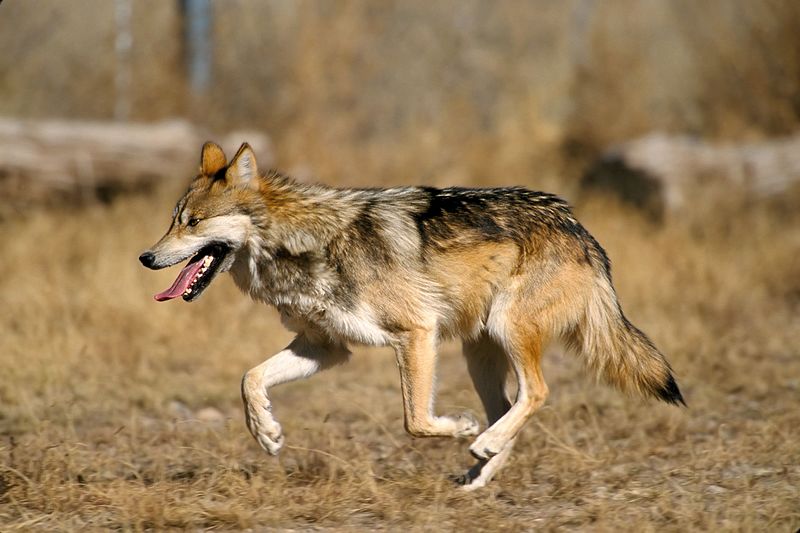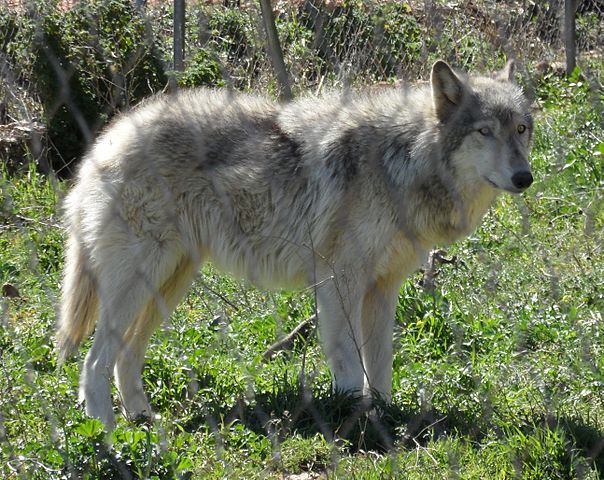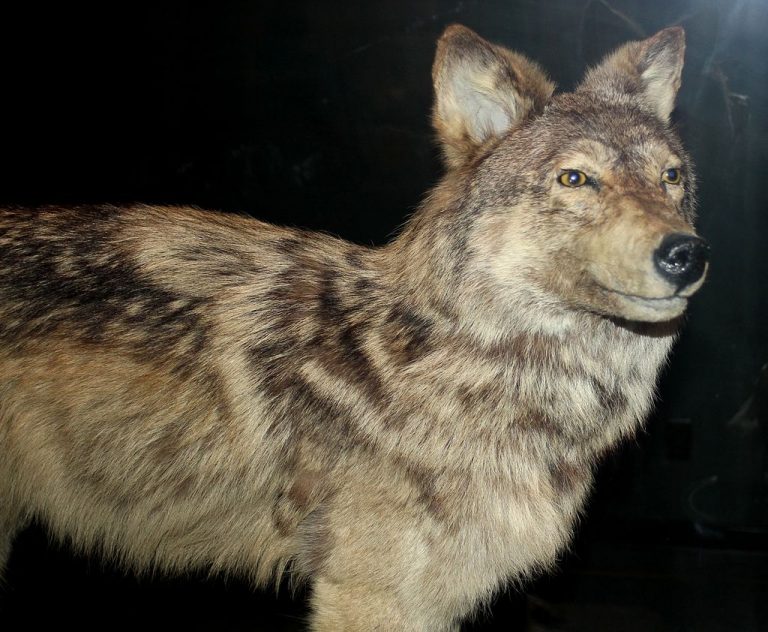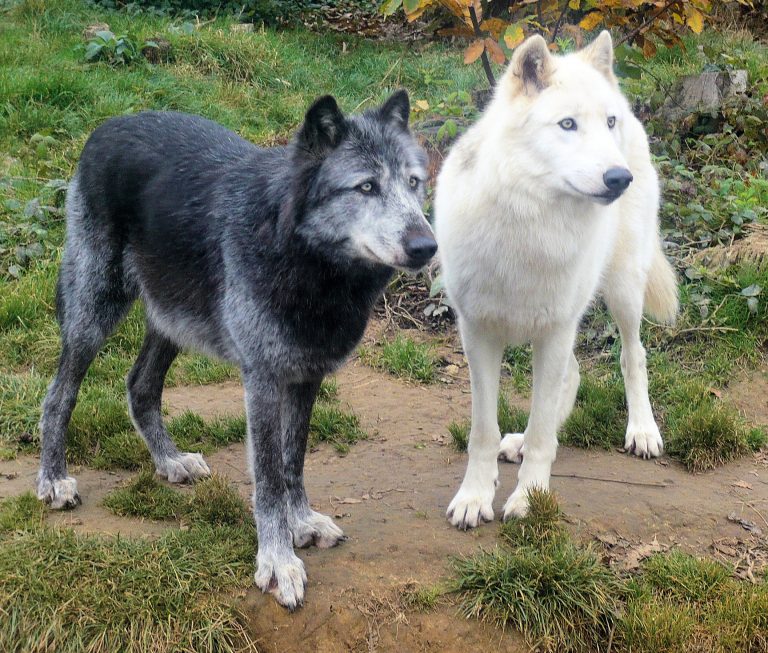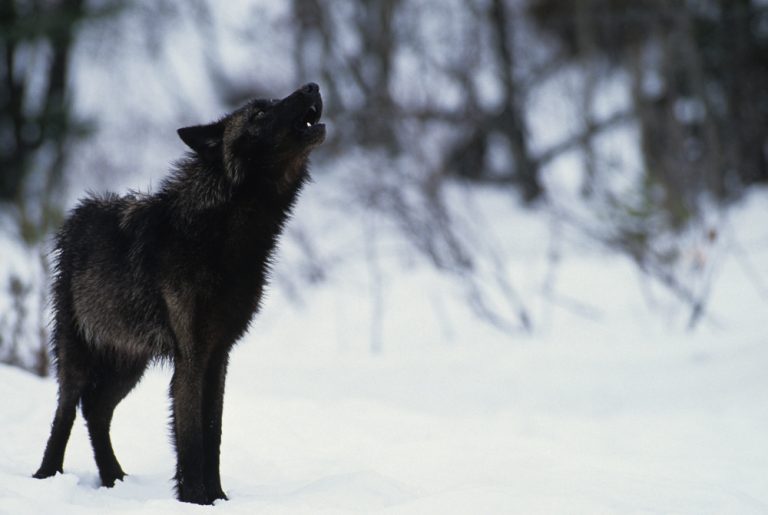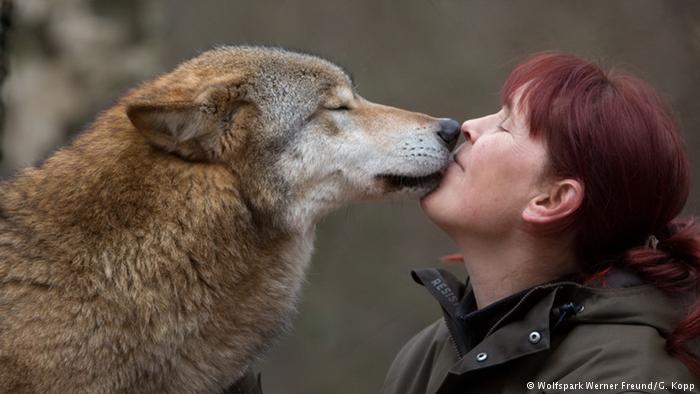The Near Tragedy Of The Mexican Wolf
The Mexican Wolf is another species that would have gone extinct by now if not for a quick intervention.

The Mexican wolf (Canis lupus baileyi), also commonly known as El Lobo, is the most genetically distinct ancestry of wolves found in the western hemisphere. It’s a subspecies of the gray wolf and the smallest in size of gray wolf types.
It stands 24 to 33 inches tall and has a dark colored coat of gray, brown and black thick fur with various facial patterns.
Mexican Wolf Habitat And Behavior
Mexican wolves are fond of grasslands, rocky terrains, and shrubs. They are highly social animals and live in packs. A pack of Mexican wolves is structured in such a way that it includes the breeding couple i.e. the alpha male and the alpha female and their pups. The offspring are born blind and are left in the den for at least ten weeks to get ready to face the world.
These wolves have a strong sense of smell, keen hearing abilities and sharp vision. Mexican wolves communicate primarily though their distinctive howl and scent markings.
Native Prey Of The Mexican Wolf
Mexican wolves prey on elk, mule deer, white-tailed deer, rabbits, and other small-sized mammals. They may also attack and kill livestock.
The Mexican Wolf And The Gray Wolf
The Mexican wolves are actually a subspecies of the gray wolf. When compared to their cousins, the gray wolves, Mexican wolves appears smaller and have a narrower skull. They have legs that are longer and a sleek body which empowers them to run fast.
Present Day Population And Status Of Mexican Wolves
The Mexican wolves were once found in abundance throughout Southeastern Arizona, Southern New Mexico, Western Texas and Northern Mexico. But presently, they are classified as an Endangered species.
Highly tragic indeed!
As per current statistics, there is only a single pack made up of 113 individuals that live in the Rocky Mountains of New Mexico and Central Arizona.
Apart from these, all other wolves of this subspecies, 300 in total, live in captivity.
What really caused the sharp decline in Mexican Wolf numbers?
Mexican wolves were almost totally eliminated by a deadly combination of the following:
- Widespread hunting,
- Habitat destruction leasing to confinement and reduction of prey,
- Digging pups out directly from their dens,
- Poisoning by livestock farmers who blamed the wolves for killing their animals.
The above factors were responsible for the wipe-out of the Mexican gray wolves by the mid-1900s. Most of them were eliminated by the early 1970s and were listed as Critically Endangered by the U.S. Fish and Wildlife service in 1976.
Measures To Recover The Mexican Wolf Population
As the Mexican wolves resident in Mexico progressed towards complete extinction by 1980, the U.S. Fish and Wildlife service took a proactive step and captured the last few Mexican wolves in the wild. These original five Mexican wolf survivors were the pioneers of the captive-breeding program aimed at expanding the population of Mexican wolves and saving the species from extinction.
Remarkably, the captive-breeding program was successful and the number of Mexican wolves gradually increased. As a result, by early 1998, some wolves were re-introduced into the wild.
Even today, the Mexican wolf population remains at the edge of extinction, threatened by illegal hunting and revenge killings.
Moreover, poor genetic diversity which is a result of inbreeding also poses a potential threat to the survival of these animals.
What Impact Would The Extinction of Mexican wolves have on the ecosystem?
Remember that these are the top predators in their habitat. The extinction of the top predator in any food chain usually spells catastrophe in that locality as it can lead to an imbalance in the growth rate of prey.
For example, the sudden and rapid loss of several Mexican wolves resulted in the disruption of the food chain and caused the wolves’ prey (elks, mule, white-deer) to multiply drastically, resulting in severe loss of vegetation in the area.
Since the return of the Mexican wolves in the wild, there has been a significant control in the loss of vegetation and the number of elks and white deer in the immediate vicinity.
Challenges to Mexican Wolf Survival Today
-
Negative Human Attitudes
It’s sad to see that people are still very suspicious and intolerant of these wolves. Such intolerance is to a large extent fueled by superstitions, myths about wolves, and a general resistance to government’s protection of this species.
Though these wolves are only responsible for a negligible fraction of dead livestock, there are still cases of this species being shot in apparent “revenge killings.”
-
A Dwindling Gene Pool
Because there were just a handful of wolves that started the captive breeding program, all Mexican wolves today without exception are direct descendants of those wolves.
Consequently, their genetic diversity is restricted and extremely low. Basically, inbreeding is causing problems among the surviving wolves and with time, this will affect their ability to adapt. Because their gene pool is so small, they are at a disadvantage and they may not be adapt quickly to changing conditions in their environment.
Unfortunately, until more wolves are released from captivity to join those in the wild, this problem will persist and likely worsen.
No new wolves have been released in recent years despite the glaring problems that are emerging.
But one troubling issue is this: Would it be better to keep them in captivity where they are relatively safe and risk the welfare of the few wolves remaining in the wild? Or, should more be released to the risky environment of the wild?
Only time will tell what the best decision would eventually be .

